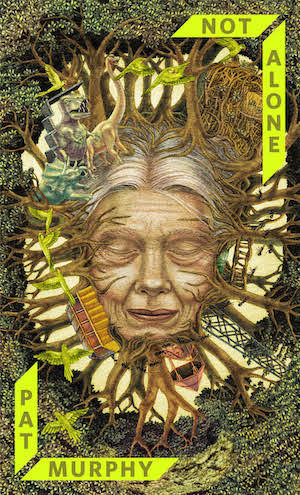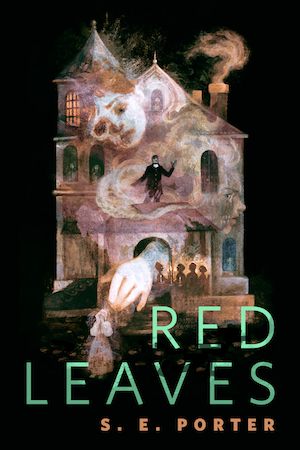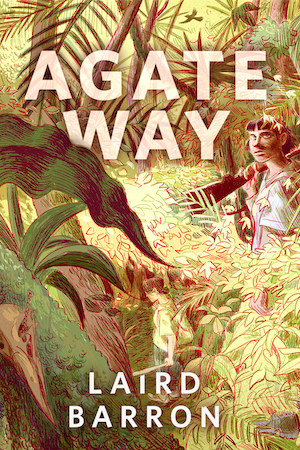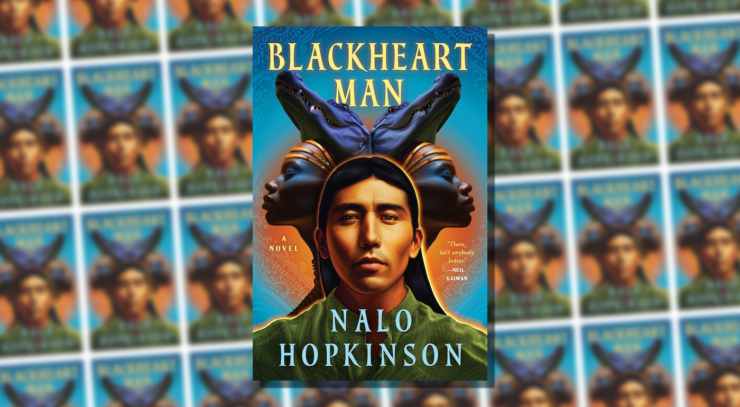Chynchin was born from a brutal slave rebellion. The Ymisen empire had colonized the largely barren island and dumped thousands of enslaved people onto it to labor. Chynchin won its freedom at the cost of the lives of many Mirmeki, press-ganged soldiers from other parts of the Ymisen empire forced to act as cannon fodder for their overlords. Three witches cast a spell that swallowed the unlucky Mirmeki soldiers in piche (tar). Nowadays, the descendents of the Mirmeki who joined with the Chynchin share the island in relative harmony (if not equal status). When a Ymisen fleet unexpectedly arrives in the harbor, it’s clear that the old empire has shaken itself out of its stupor and decided to make one last attempt to bring their lost colony (and its abundant resources) back into the fold.
When the ships arrive, Veycosi, a griot-in-training, is in the hills above Carenage Town getting into trouble once again. He has decided to “fix” an ongoing issue with water delivery at the reservoir by dropping a couple small bombs into a pipe, and, of course, things go spectacularly awry. This is par for the course for Cosi. He has changed occupations as often as others change their hairstyle. His betrothed—Chynchin marriages usually involve two men and a woman—have given him an ultimatum: Get a real job or no wedding. Unfortunately, his antics at the Cullybree Heights reservoir earn him a demotion, delaying a crucial trip as part of his training at the Colloquium and therefore his nuptials. That demotion pulls him into the orbit of the newly arrived Ymisen sailors, who bring with them Tierce, the young heir to the imperial throne, and Androu, a turncoat Mirmeki who left Chynchin for Ymisen and holds no love for his former homeland.
Nalo Hopkinson structures the book into a few long chapters, with section breaks and POV shifts to keep up the pacing. The first couple chapters involve a lot of table-setting, and even though not not much happens, it allows Hopkinson to build out a thoroughly fascinating and detailed world populated with unique and riveting characters. The Ymisen rely on currency and place great value in hierarchies, whereas Chynchin do everything by barter, consider needing to be paid for work an indication that a person is lazy, and work together as a collective. Chynchin is a tropical island lush with fresh foods and spices whereas Ymisen is a dank, cold, filthy place where everyone but the rich scrabble for scraps.
Buy the Book
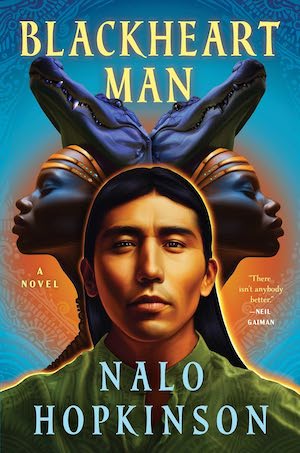

Blackheart Man
Much of the dialogue is written in dialect. The Ymisen sailors speak in a way that makes them sound, to English speakers, like they stepped out of the 18th century: “Th’art Mirmeki, with or without the tattoos. Wer’t cheery as the morning sun, I would fear for thy senses.” The people of Chynchin and the narrative portions of the text use Caribbean creole-influenced dialect, with terms like pickens, banna, rumbullion, guamajico, compong, and hamaca making regular appearances. Hopkinson doesn’t bother with a glossary; instead, she trusts the reader to figure out what they need to from context.
Although Hopkinson builds her own histories and cultures, if you know anything about the Black diaspora in the Caribbean, many of the elements in Blackheart Man will seem familiar. No surprise, either. She grew up in Jamaica and has lived in Guyana and Trinidad and Tobago. Her bibliography is deeply rooted in Caribbean cultures and traditions, whether set in 18th century St. Domingue, another planet in the distant future, or post-apocalyptic Toronto. Her books blur the lines between fantasy and science fiction into something distinctly and wholly her own.
Once the action kicks into gear, the book is even harder to put down. Every time Veycosi tries a quick and easy fix, he manages to make everything worse. Each of his solutions only create new problems, and instead of learning from his mistakes he just tries a new angle next time. While he tries to get off punishment with the Colloquium and convince Tierce and Androu not to invade Chynchin, a group of children vanish without a trace. One of those kids is Kaïra, the daughter of one of his betrotheds and the earthly representation of the Chynchin goddess the trickster Mamapiche, twin of Mamagua. Together they form the caiman-headed twinned goddess Mamacona, who watches over the island from her statue near the reservoir.
Hopkinson also drops us into the perspectives of other characters such as Mamacona and a Blackheart Man, one of the Mirmeki soldiers drowned in piche. Using the witches’ magic, he has bided his time until he’s strong enough to resurface and get his revenge. The Blackheart Man, Androu’s schemes, Kaïra’s disappearance, Tierce’s demands, and Mamacona’s protection all converge on Veycosi. He may not believe in magic, but the rest of Chynchin does.
Veycosi was a challenging character for me. Likeability isn’t something I usually concern myself with for fictional characters. I’m much more interested in how they affect and are affected by the plot rather than whether or not I’d like to hang out with them. Veycosi pushed that right to the edge. He has a particular personality that I found exceptionally grating, to the point I kept wishing Hopkinson would detour to other characters like Samra, who I found more compelling. By the end, I understood why she made him the way he was. His arc makes total sense by the final chapter—even if I still couldn’t stand him. Surprisingly, I also realized that, as frustrated as I found his personality, I wouldn’t change a thing about him. Hopkinson is so damn good at her craft that it was worth putting up with Veycosi’s nonsense.
Readers used to a quicker pace in their fantasy fiction, characters engaged in a battle between good and evil, and redemption arcs for wayward protagonists should set aside those expectations before diving into Blackheart Man. Hopkinson knows exactly what she’s doing, and all we have to do is trust her and go along for the ride.
Blackheart Man is published by Sage Press.


